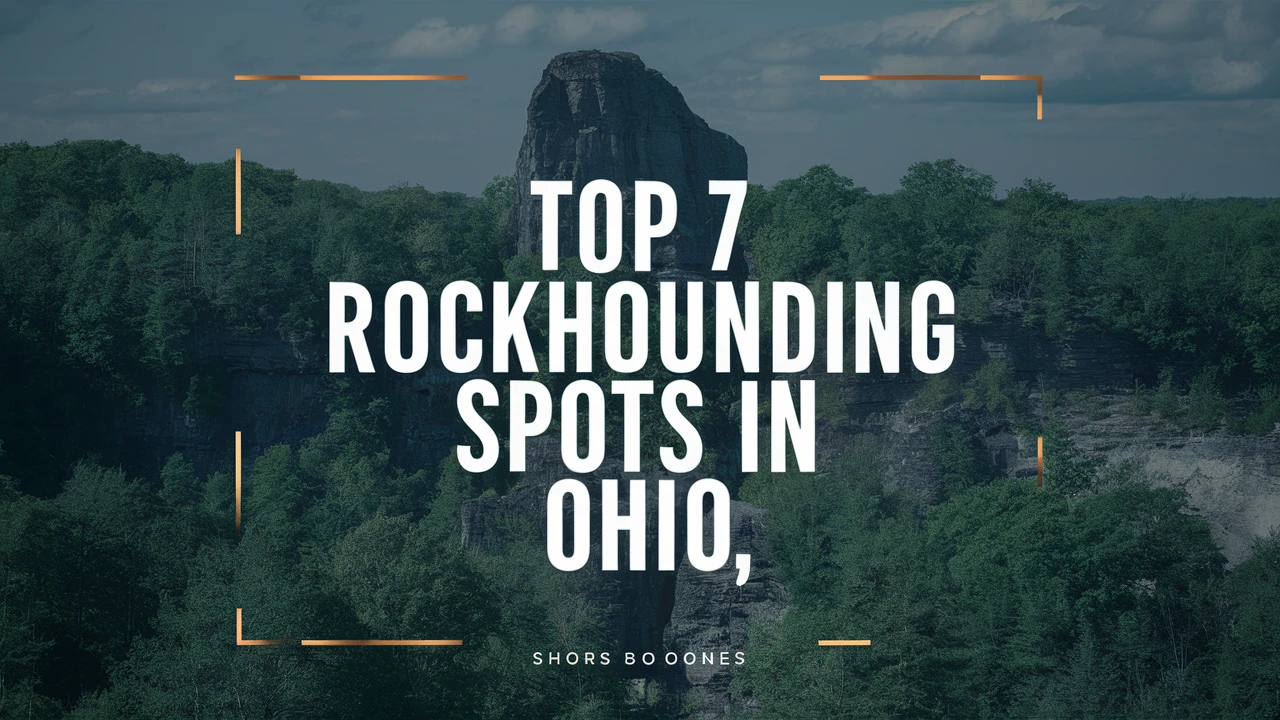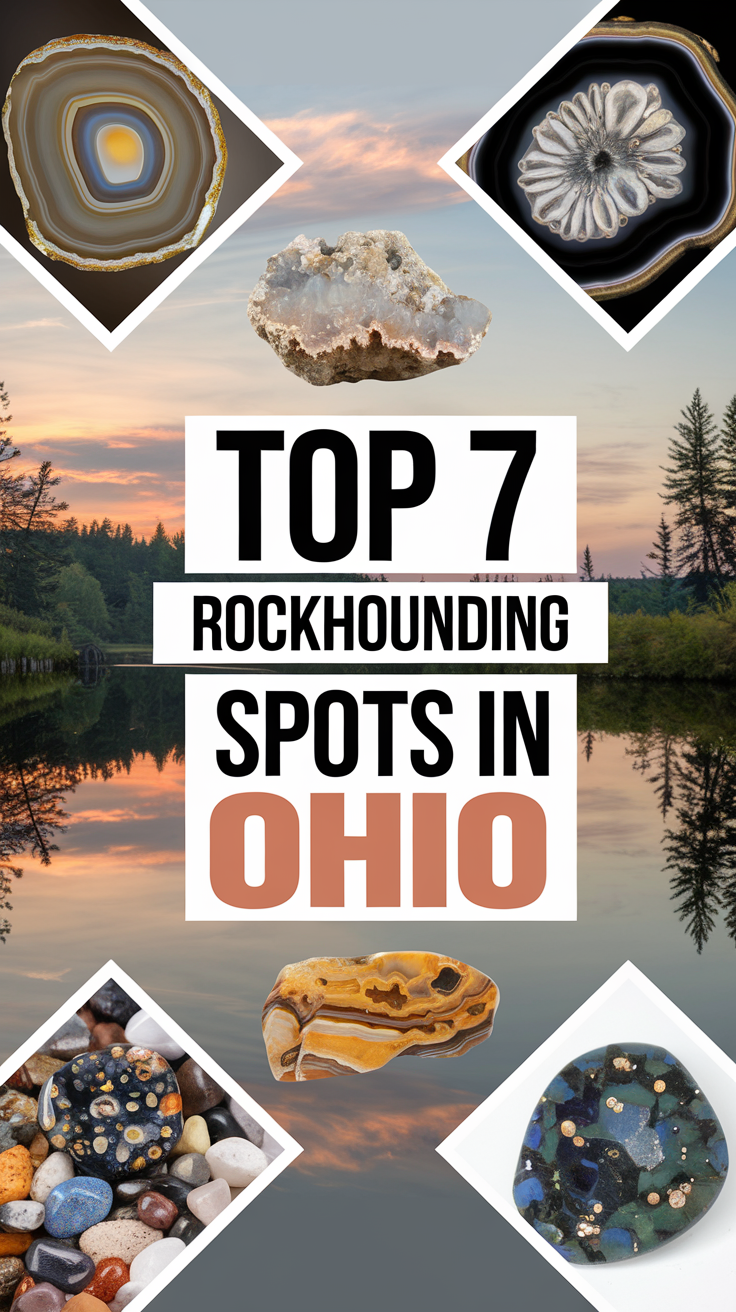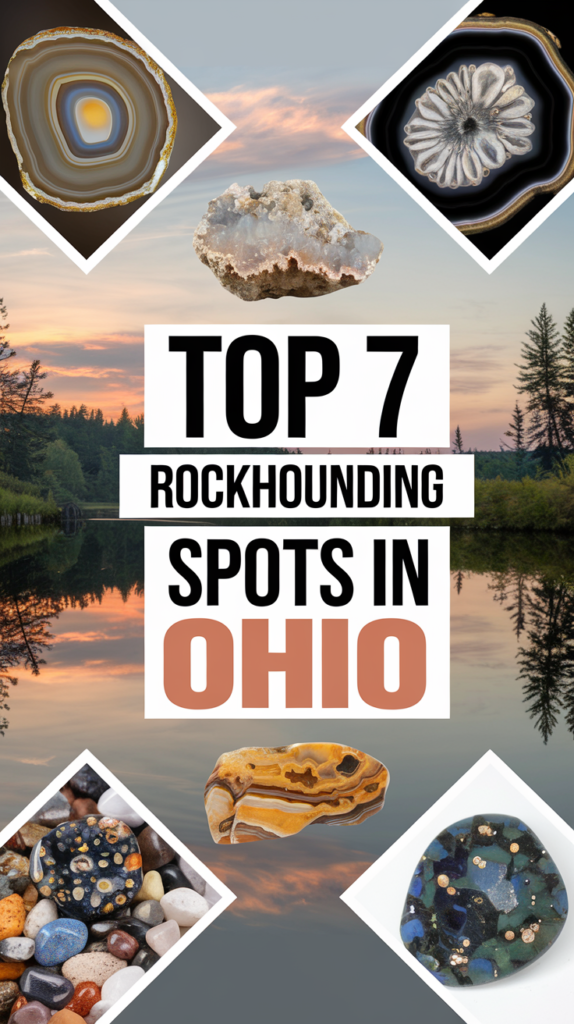
Ohio’s rich geological history makes it a treasure trove for rockhounding enthusiasts. From the crystalline deposits of celestine to the abundant fossils of the Ordovician period, the Buckeye State offers diverse opportunities for both novice collectors and seasoned rockhounds. Having spent countless weekends exploring Ohio’s various collecting sites, I’ve discovered that each location has its own unique charm and mineral offerings. In this comprehensive guide, I’ll share the top seven rockhounding spots in Ohio, along with essential tips to make your collecting adventures both successful and memorable.
Understanding Ohio’s Geological Treasures
Before we dive into specific locations, it’s crucial to understand what makes Ohio such a unique destination for rockhounding. The state’s geological formation spans millions of years, resulting in diverse mineral deposits and fossil-rich sedimentary layers. During my years of collecting, I’ve learned that understanding the basics of Ohio’s geology can significantly improve your chances of finding specimens.
Here’s a quick overview of what you might find:
| Geological Period | Common Finds | Best Locations |
|---|---|---|
| Ordovician | Brachiopods, Trilobites, Crinoids | Cincinnati Region |
| Devonian | Celestine, Fluorite | Northwestern Ohio |
| Silurian | Dolomite, Gypsum | Central Ohio |
Essential Equipment for Ohio Rockhounding
Before heading out to any location, proper equipment is essential. Through trial and error, I’ve compiled a list of must-have tools:
– Basic Tools:
– Rock hammer (geological pick)
– Chisels of various sizes
– Safety goggles and work gloves
– Collection bags or buckets
– Field notebook and pen
– Advanced Equipment:
– GPS device
– Digital camera
– Spray bottle with water
– Small brushes for cleaning specimens
– First aid kit
| Season | Additional Equipment Needed | Special Considerations |
|---|---|---|
| Spring | Rain gear, waterproof boots | Muddy conditions |
| Summer | Sun protection, extra water | Heat exposure |
| Fall | Layered clothing | Variable weather |
| Winter | Thermal gear, hand warmers | Limited access |
Top 7 Rockhounding Locations in Ohio
1. Caesar Creek State Park
Located in Warren County, this is my personal favorite spot. The emergency spillway area is renowned for its Ordovician fossils. I once spent an entire weekend here and found several perfect trilobite specimens. Remember to obtain a free permit from the Army Corps of Engineers office.
2. Flint Ridge State Memorial
This historic site in Licking County offers beautiful flint in various colors. Native Americans once quarried this site, and you can still find high-quality specimens. The visitor center provides excellent context for your finds.
3. Oakes Quarry Park
Situated in Fairborn, this location offers excellent opportunities for finding marine fossils. The exposed limestone beds contain brachiopods, crinoids, and occasional trilobites.
4. Clay Center
Northwestern Ohio’s premier spot for collecting celestine and calcite crystals. While access is restricted, organized field trips through local clubs provide opportunities to collect here.
5. Indian Creek
This location in Montgomery County is excellent for finding crinoids and other Ordovician fossils. The creek bed exposure makes for easy collecting after rainfall.
6. Hueston Woods State Park
The fossil-collecting area near the marina offers abundant brachiopods and bryozoans. I’ve had particular success here during spring when winter erosion exposes new material.
7. Stonelick State Park
This Clermont County location provides excellent opportunities for finding Ordovician fossils, particularly after heavy rains have washed away surface material.
Safety Guidelines and Best Practices
Your safety should always be the top priority while rockhounding. Here are essential guidelines I’ve developed through experience:
– Basic Safety Rules:
– Never collect alone
– Inform someone of your location and expected return time
– Carry a fully charged cell phone
– Stay hydrated and bring snacks
– Wear appropriate protective gear
– Weather Considerations:
– Check weather forecasts before heading out
– Avoid collecting during or immediately after heavy rains
– Be aware of flash flood potential in creek beds
– Consider seasonal hazards (ticks in summer, ice in winter)
Common Mistakes to Avoid:
1. Overloading collection bags
2. Ignoring property boundaries
3. Forgetting to document finds
4. Neglecting to check local regulations
5. Collecting in unstable areas
Conclusion
Ohio’s rockhounding opportunities are truly remarkable, offering something for everyone from casual collectors to serious mineralogists. Through my years of experience, I’ve learned that successful rockhounding combines knowledge, preparation, and respect for both the environment and local regulations. Whether you’re searching for pristine fossils at Caesar Creek or hunting for celestine crystals near Clay Center, remember that each trip offers not just the possibility of finding specimens, but also the joy of connecting with Ohio’s rich geological history. Start with these seven locations, join a local rockhounding club, and you’ll be well on your way to building an impressive collection of Ohio minerals and fossils.
Key Takeaways
- Always obtain necessary permits and permissions before collecting
- Proper equipment and safety gear are essential for successful rockhounding
- Join local rockhounding clubs for guidance and organized field trips
- Document your finds with photos and location data
- Respect collecting sites and follow all posted rules and regulations
Frequently Asked Questions
Do I need a permit to collect rocks and minerals in Ohio?
Some locations, like Caesar Creek State Park, require permits for collecting. Always check with site authorities before collecting.
What is the best season for rockhounding in Ohio?
Spring and fall offer the most comfortable conditions, while spring often reveals new specimens due to winter erosion.
Can children participate in rockhounding activities?
Yes, many locations are family-friendly, but proper supervision and safety equipment are essential.
What are the most common fossils found in Ohio?
Brachiopods, trilobites, and crinoids are among the most common Ordovician fossils found in Ohio.
Are there any rockhounding clubs in Ohio?
Yes, there are several mineral and fossil clubs throughout Ohio that organize field trips and educational events.
What basic tools do I need to start rockhounding?
Essential tools include a rock hammer, safety goggles, collection bags, and a field guide to local specimens.
Is it legal to sell fossils found in Ohio?
Generally yes, but specimens collected from state parks may have restrictions. Check local regulations.
How can I identify the rocks and minerals I find?
Local clubs, field guides, and mineral identification apps can help identify specimens. Universities often offer identification services.
What should I do if I find a significant fossil?
Document the location, photograph the specimen, and consider reporting significant finds to local universities or museums.
Are there any dangerous minerals to avoid in Ohio?
While Ohio doesn’t have many dangerous minerals, always wear protective gear and avoid collecting near unstable cliff faces or quarry walls.


